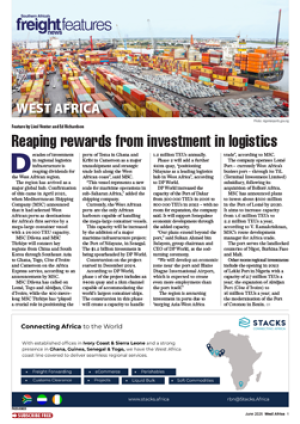Alan Peat IN A NOTICE last Friday to all shippers, the Europe Southern Africa Conference (ESAC) dropped the port congestion surcharge - the “SA port additional” (SAPA), as they describe it - for all SA ports apart from Durban from August 1. Discussions were still taking place among the other conferences on the Far East and North American trades but were expected to be concluded within days of the ESAC announcement. Since the surcharge’s implementation on May 6, the conference’s member lines have reviewed the levels of performance at SA ports over a two-month period and a reduction in berthing delays has been measured at Cape Town and Port Elizabeth. But, said ESAC: “The situation at Durban remains of serious concern.” “Lines are also very disappointed that no significant improvement in productivity at SA ports has been detected, and that handling productivity when vessels are alongside remains poor and continues to cause delay. “Improvement in this area is still sought.” The conference secretariat in London also stressed that the operational situation would be kept under review and, “should deterioration be detected at any port beyond 16-hours berthing delay averaged over a four-week period, the lines will seek to re-impose the SAPA with minimum due notice.” But the big question now on everybody’s lips is: “Will shippers, importers and agents now divert cargoes to PE and CT to avoid the US$100 additional on every TEU (twenty-foot equivalent unit) and the US$200 on 40-footers?”
